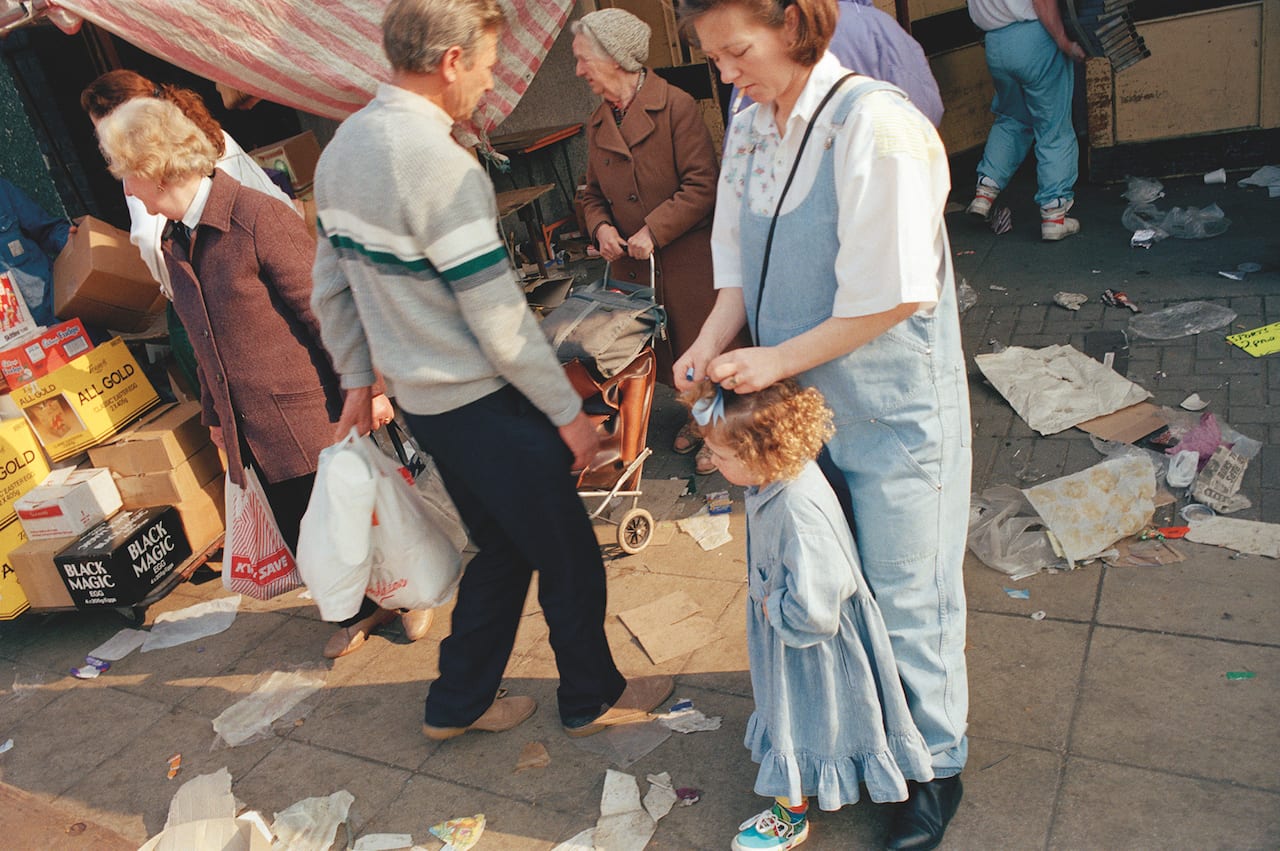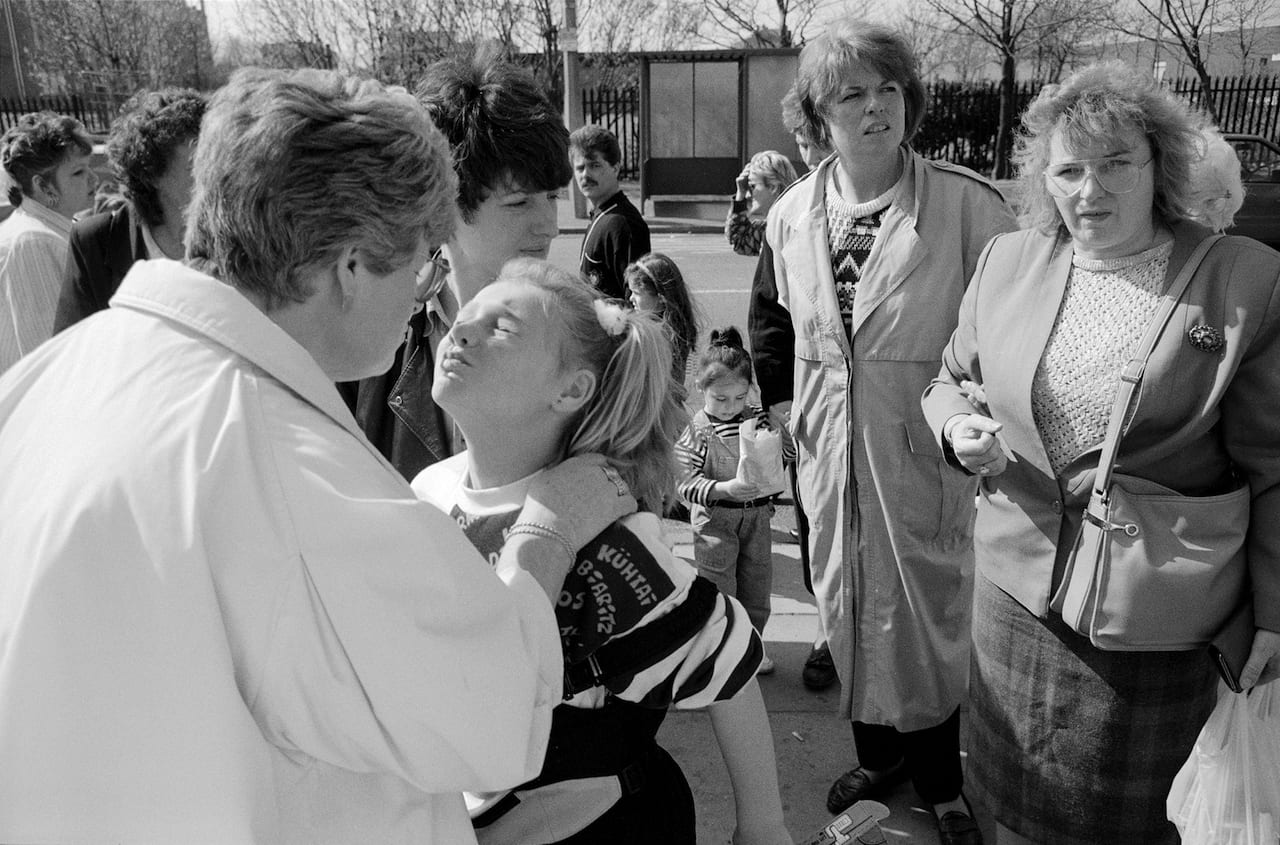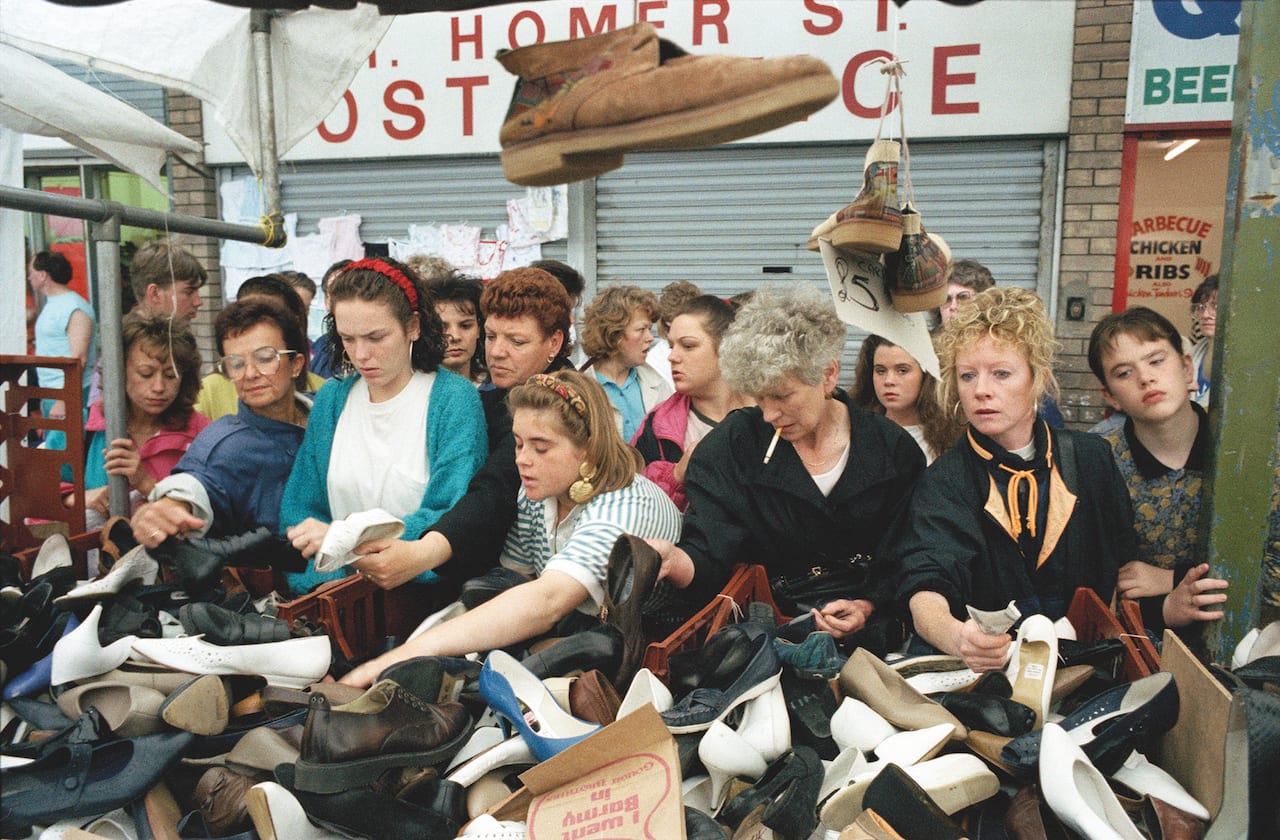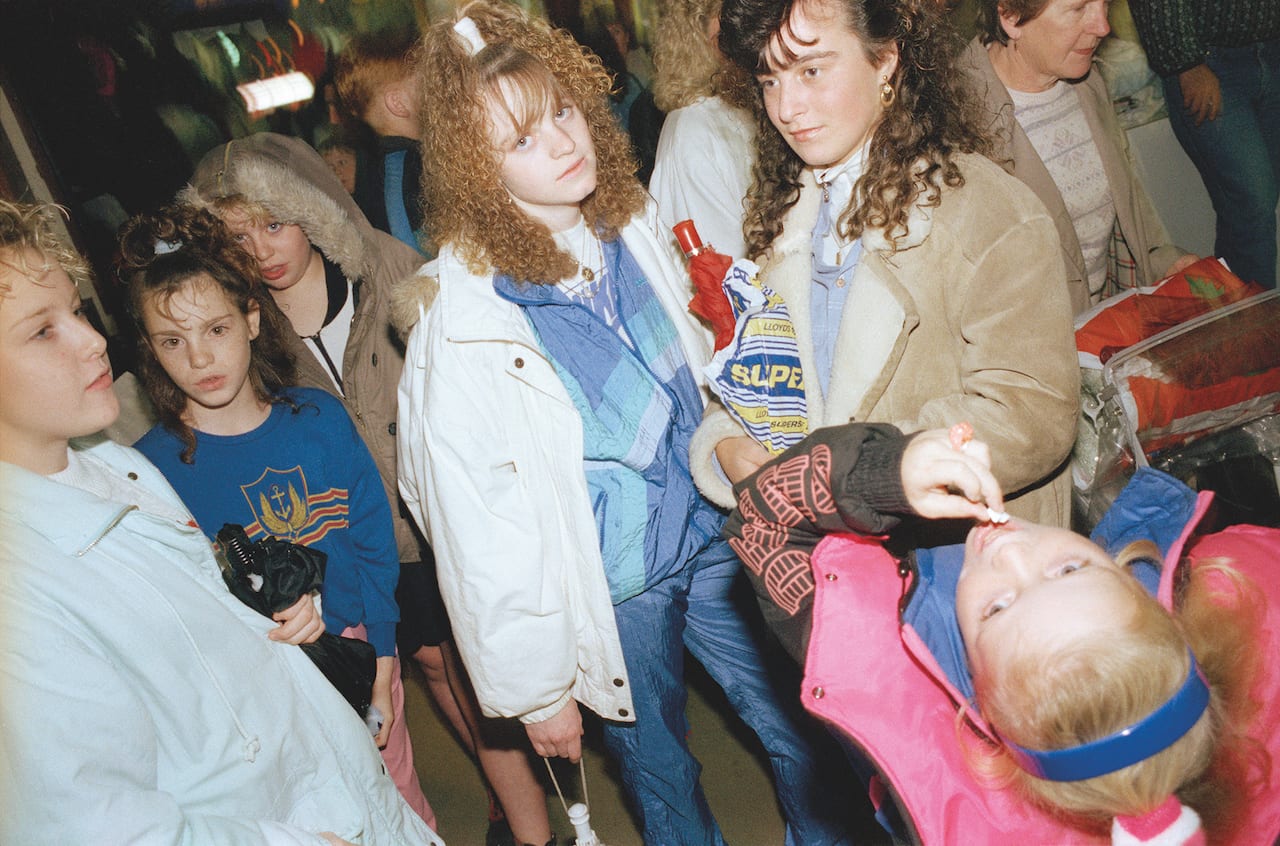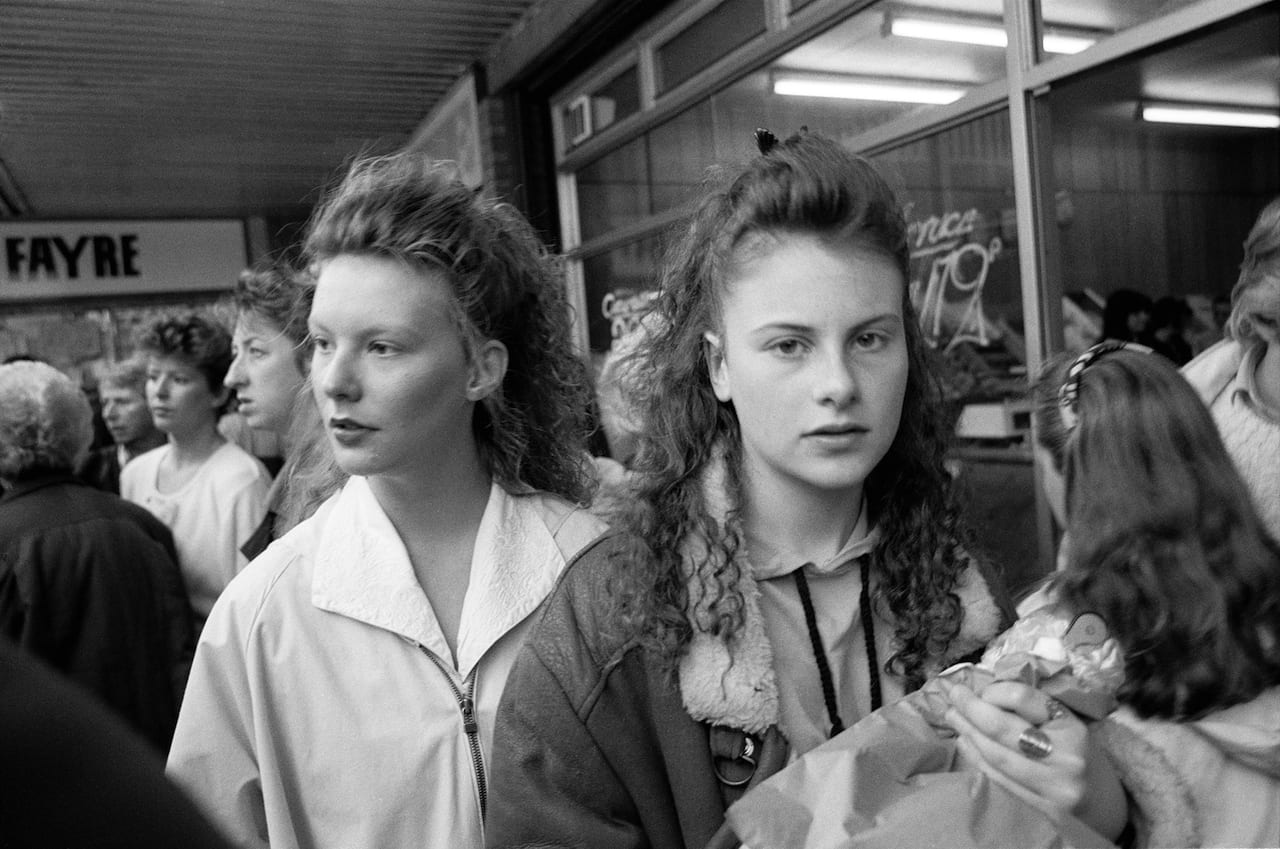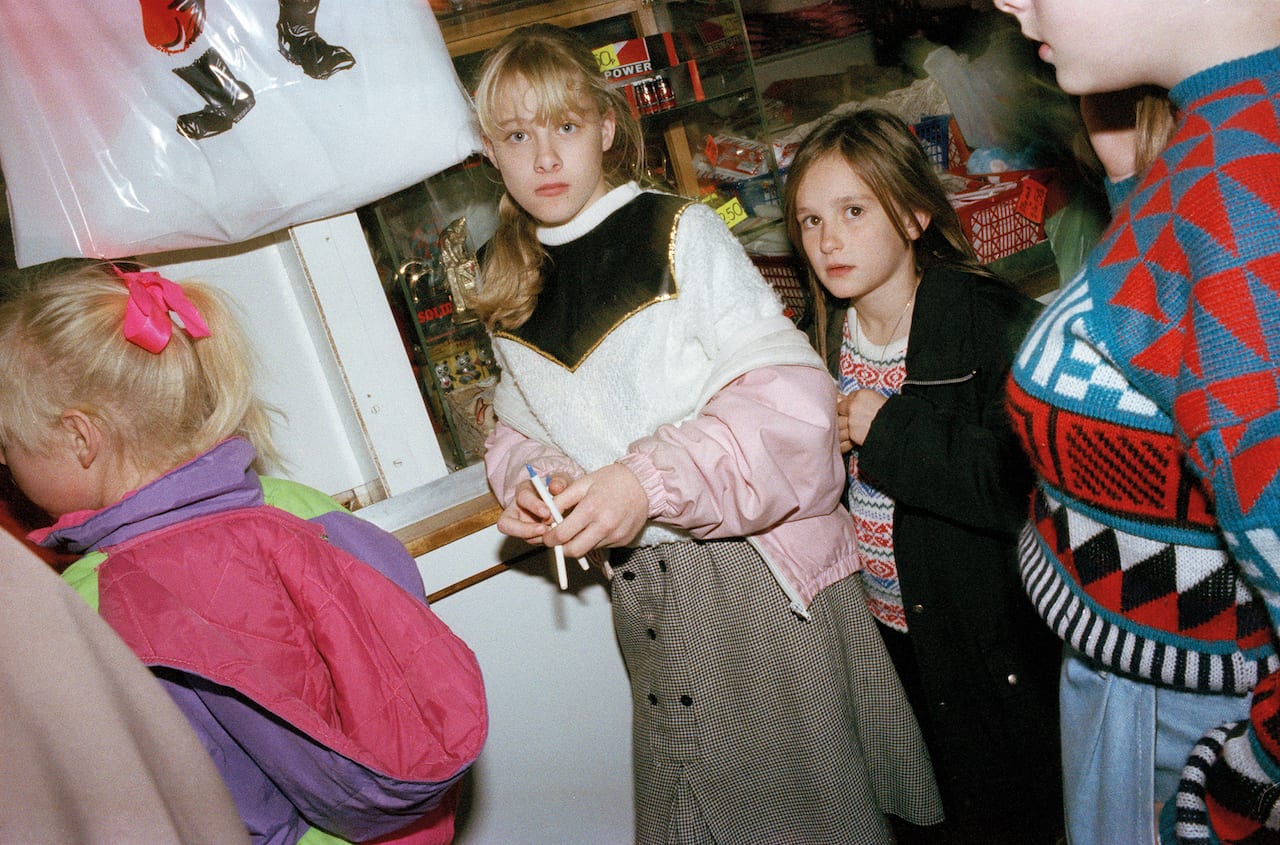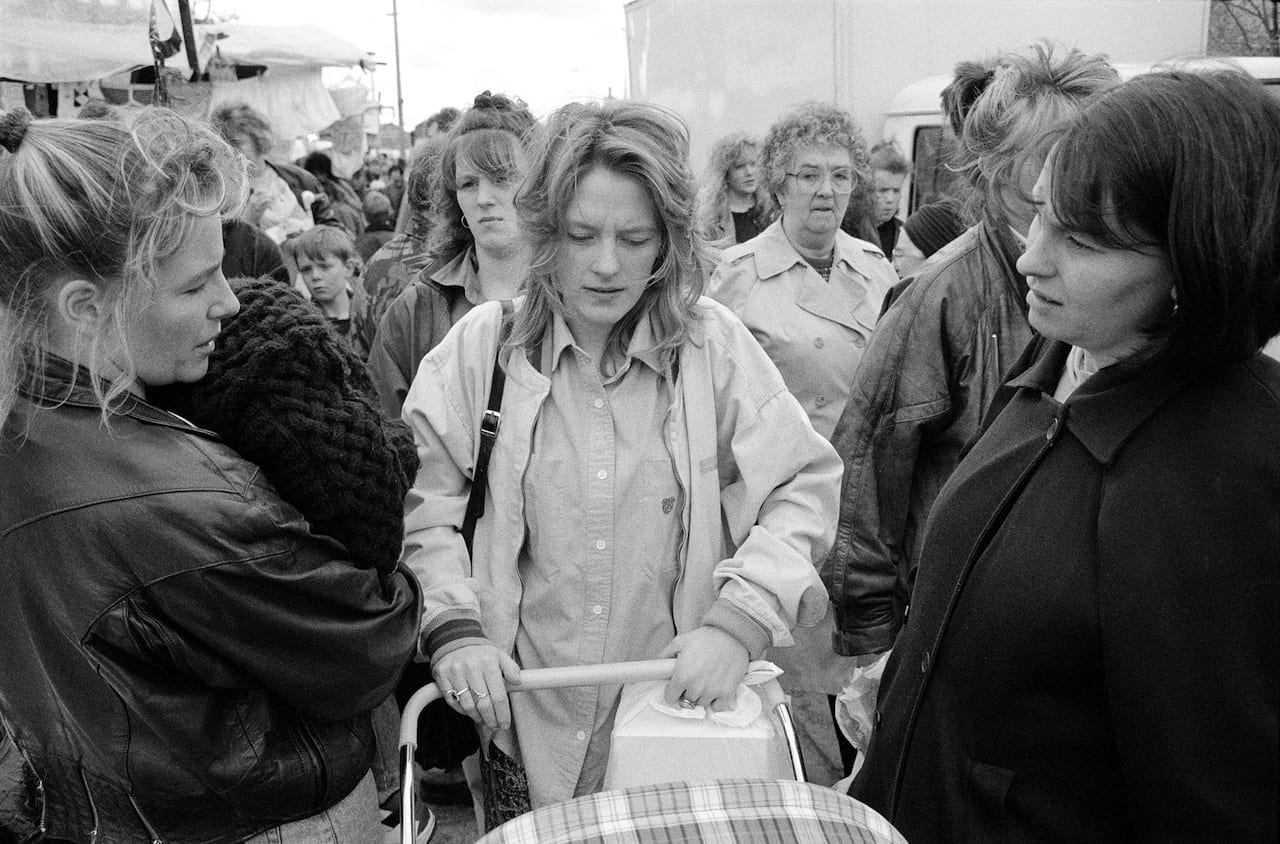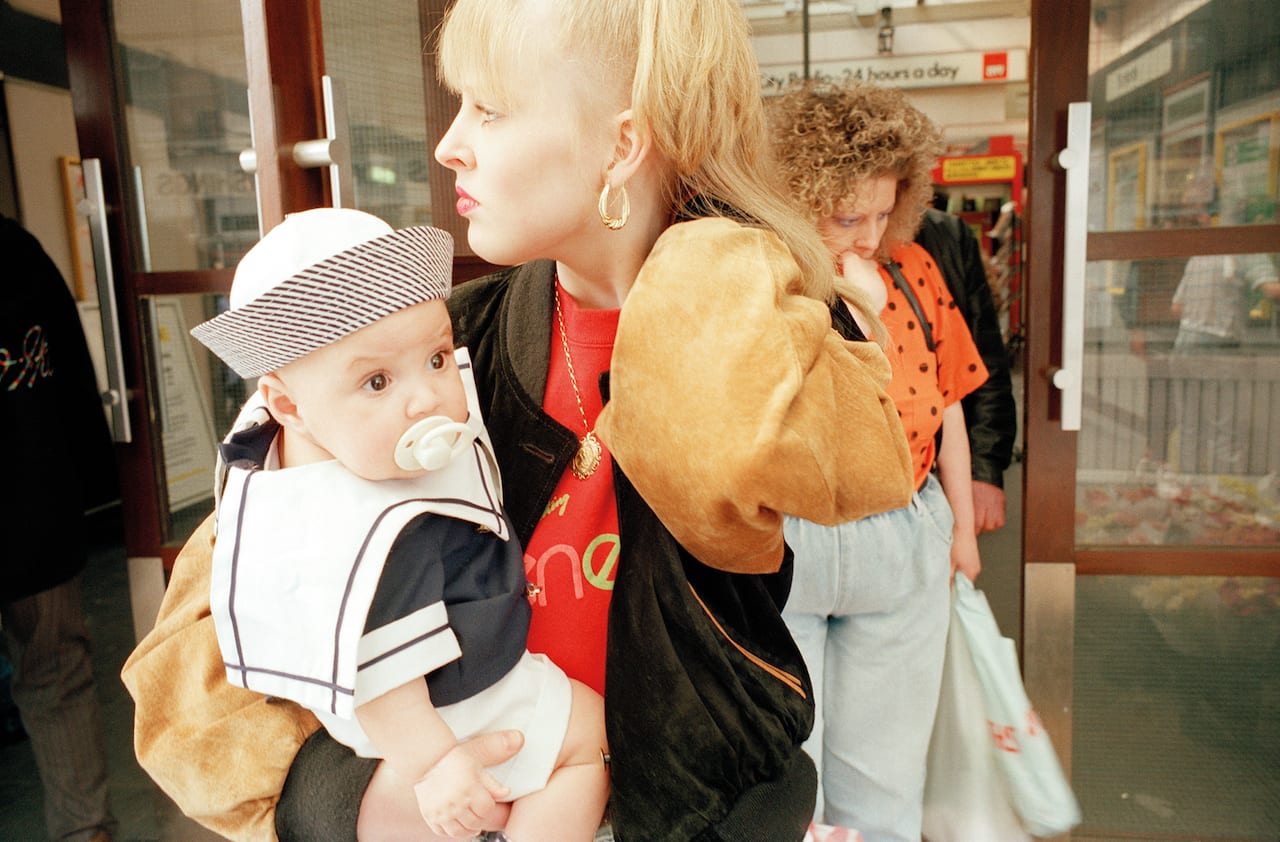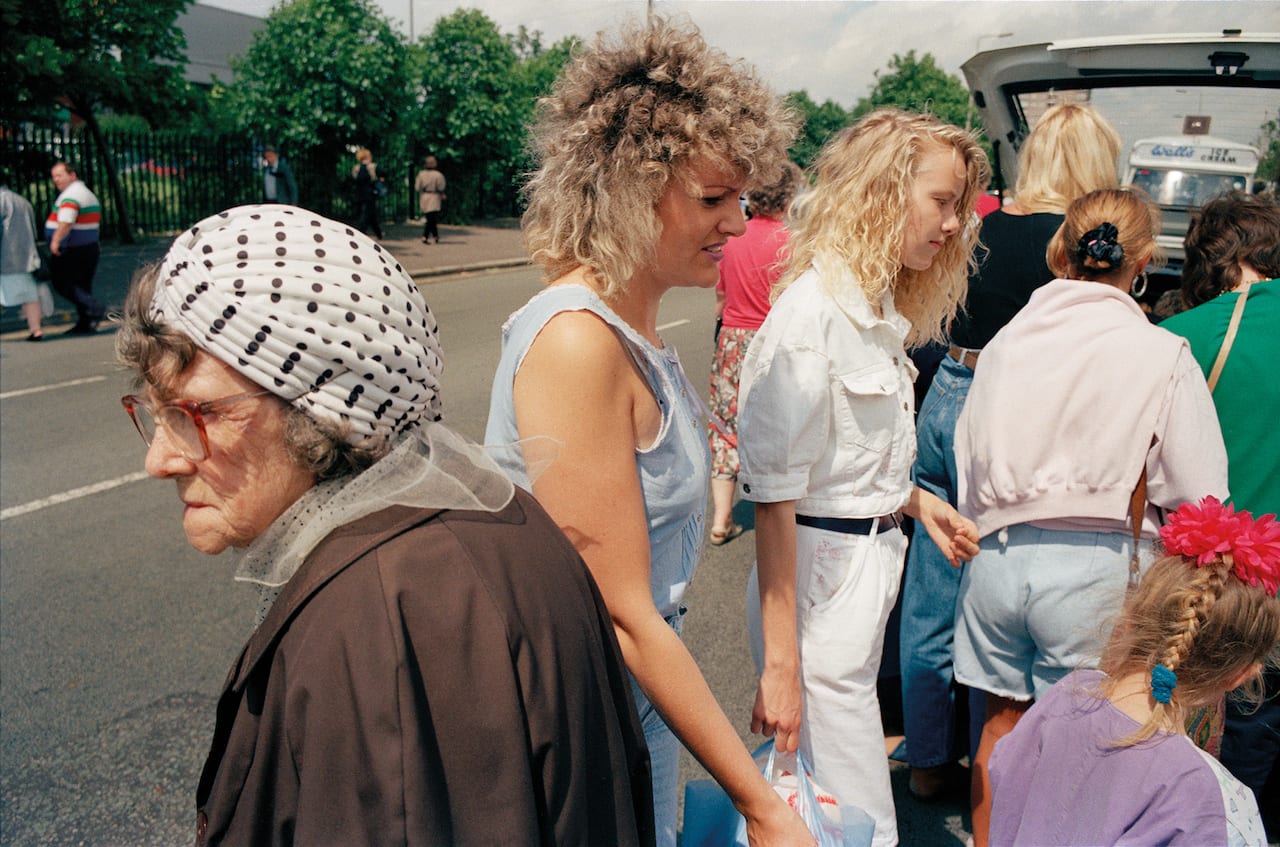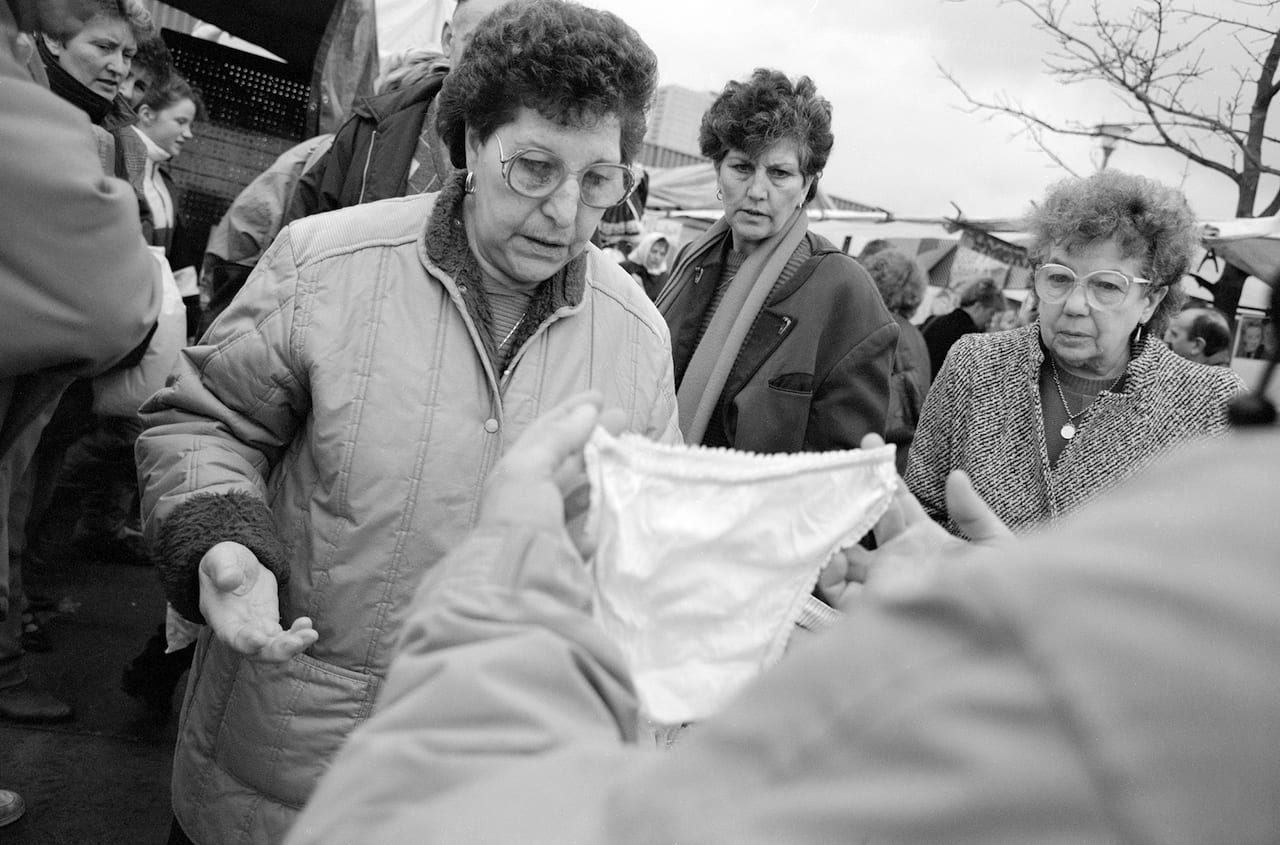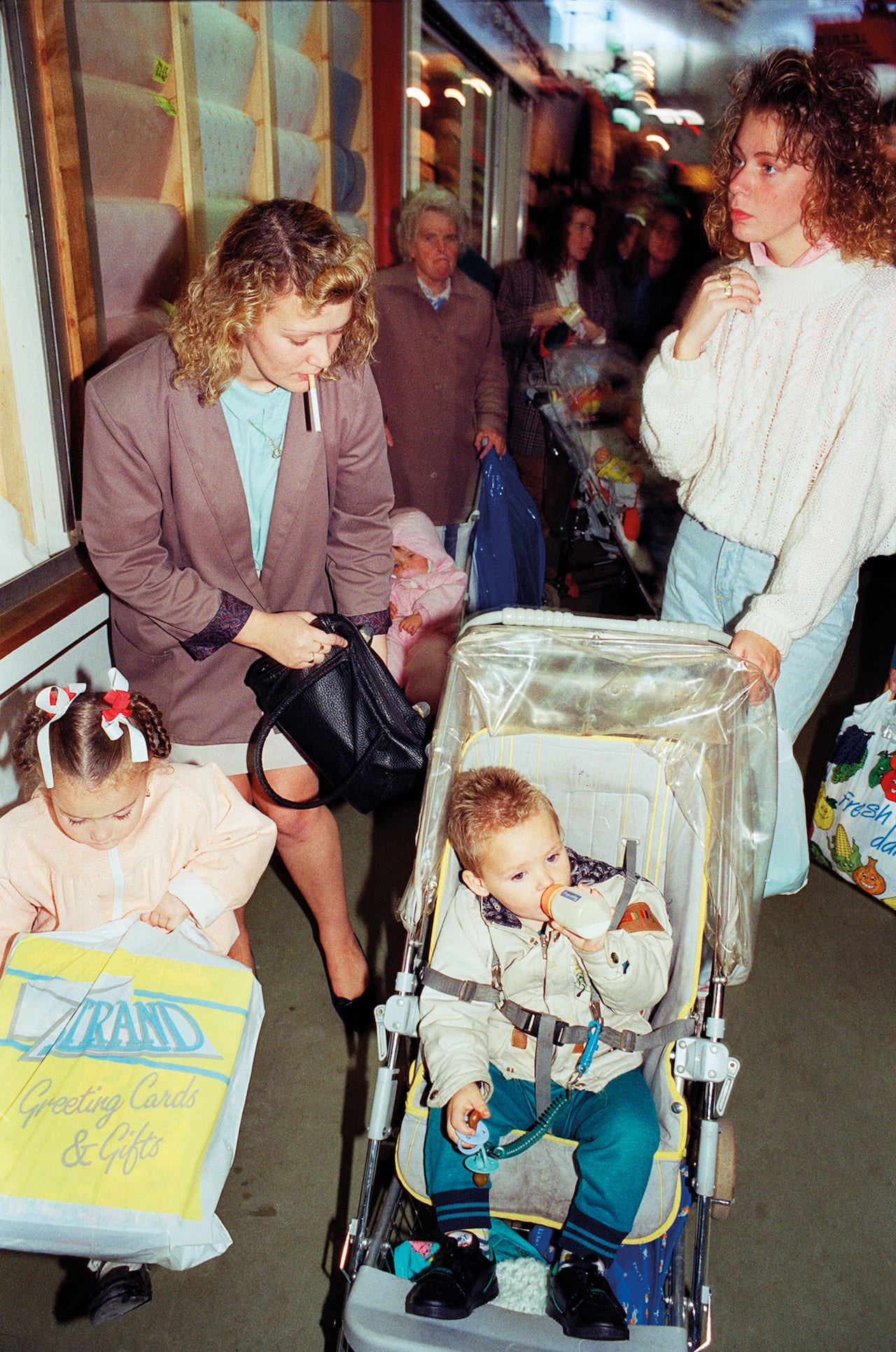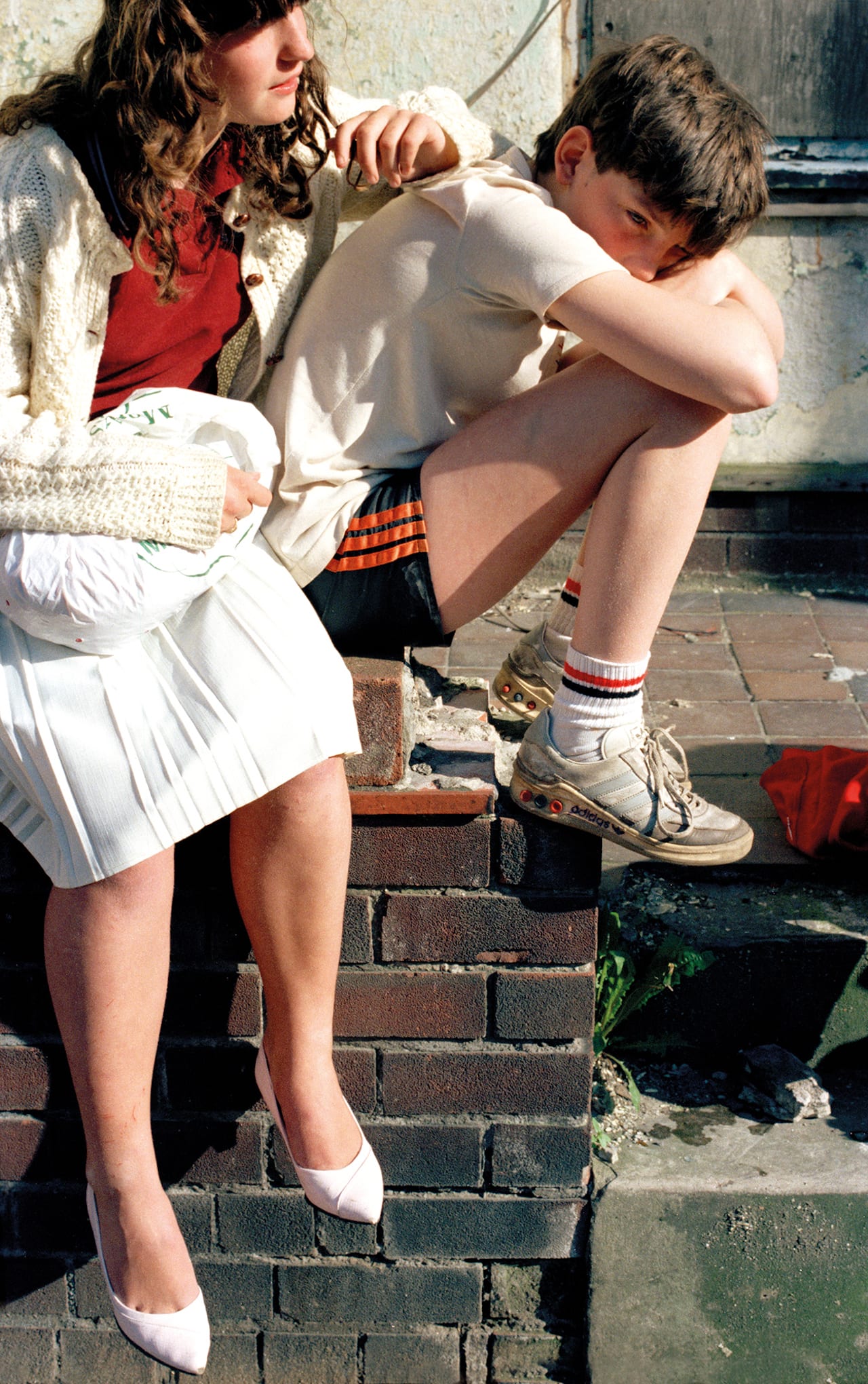Almost every Saturday between 1978 and 1999, Tom Wood travelled from his home in New Brighton by ferry and bus to Great Homer Street market, just outside Liverpool city centre in the North West of England. He would spend the morning there photographing the mothers and daughters, kids dressed in matching blue and lilac tracksuits, teenagers chatting away with their curly hair swept up into side-ponies, and grandmothers haggling for of a string of pearl necklaces or a second-hand coat. In the afternoon he’d travel on to either Everton or Liverpool football ground, then back on the bus and ferry, taking pictures every step of the way.
”God knows how many photographs I took,” he says. “When I first began photographing in Liverpool I was just overwhelmed by the people and the place. It was an exciting place to be, I fed off the energy there.”
Born in Ireland, Wood moved to Merseyside in 1975 and lived there until 2003, when he moved to his current home in North Wales. Hundreds of years ago many of the stallholders on Great Homer Street were Irish, which gave it its nickname, Paddy’s Market. Many of the people in Liverpool are of Irish decedent, so there was a sense of connection there for Wood; the women sometimes reminded him of his mother. His wife worked as a midwife at the Liverpool Women’s Hospital, while Wood worked two days a week, first as a photo technician at the School of Art, and later as a part-time lecturer, spending the rest of his time photographing.
“All the years that I made pictures in Liverpool, we were short of money,” says Wood. “Colour photography was expensive.” To cut costs, Wood swapped between outdated colour and black and white film; sometimes he would buy old cine film and roll his own, and he often carried around two cameras – one for colour, and another for black-and-white.
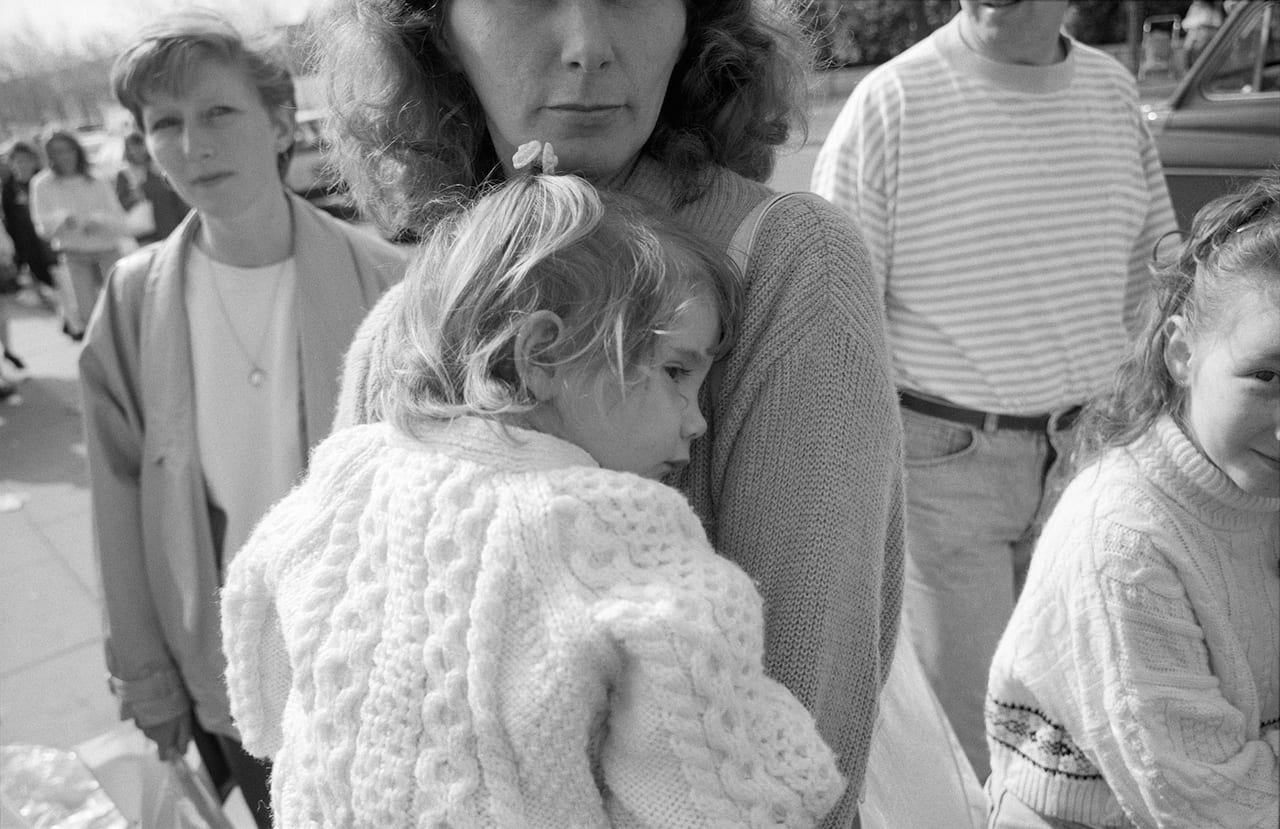
Everywhere he went, he made photographs; on the ferry, from the bus, in the pub, and in nightclubs. Some of these chunks of Wood’s excursions have been published into books, like All Zones Off Peak, which shows photographs of people on public transport, and Looking For Love, images shot in New Brighton’s Chelsea Reach nightclub. Now, over 100 of Wood’s photographs from Great Homer Street have been published, some of which go on show in London this month.
The people at the market were mainly women, who had been going there regularly since they were girls with their mothers and grandmothers, who decades ago had also gone to the market with their own mothers and grandmothers. “It had a real spirit about the place,” says Wood, “it had a sense of community, people had been going there for generations”. He describes how families gathered to discuss weekly affairs, and how people stopped to banter with familiar stallholders.
Wood always brought prints back to the market, and before long he was stopping to say hello to people too, and on occasion be asked to photograph their daughter’s weddings. “You become another character in the market,” says Wood, who, over time, became known as Photie Man, a nickname given to him by a group of local kids.
Wood maintains he wasn’t trying to document anything, even though he carried around a letter from Manchester’s Documentary Photography Archive stating he was “recording life today for the future”. This was just a supporting letter to explain his photographing in case he was challenged, he says. He adds that he was never concerned with any of the clothes, or the items on sale at the market – first and foremost, he was interested in faces, the family likenesses.
“My intention was to make interesting pictures of these relationships containing visual meanings too difficult to put into words. The fashions of the time, the abundance of shell suits for instance are just a plus when you photograph things,” he explains.
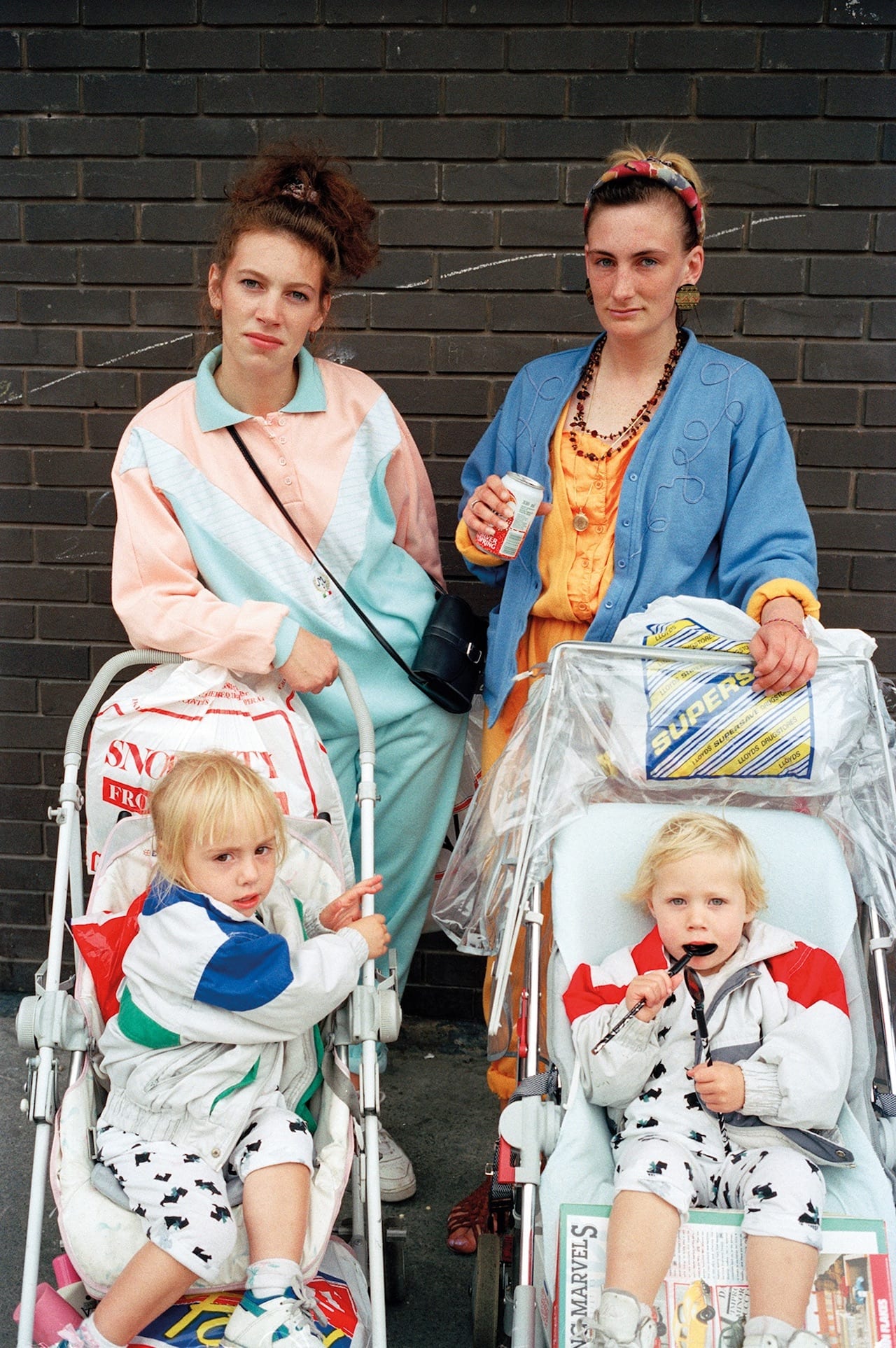
On Great Homer Street, there wasn’t the same pretence that one would find in the city centre, “where people have a particular face on, and they don’t give anything away”. Wood always tried to photograph people without them noticing, but because the market was always crowded, and he was so close-up, he often would be. Still, because he went to the market every week, month after month, people tolerated him.
Next year, Wood has more books in the pipeline. Editions Textuel in France will publish Mother, Daughter, Sister, Steidl will publish The DPA work, and RRB Photobooks is will publish Wood by Parr, a Martin Parr selection of Wood’s images. It’s quite an achievement, but success isn’t what motivated him all those years. “The main thing that gave me authenticity I guess is going to the same places again and again,” he says. “I could have gone there three or four times and got what I considered a good set of pictures. But clearly I was after something much more elusive than that.”
Women’s Market will be exhibited at Sion and Moore gallery in Bethnal Green, London, from 27 November https://www.sionandmoore.com/
The book is published by STANLEY/BARKER, available to purchase for £34.99 https://www.stanleybarker.co.uk/collections/frontpage/products/womens-market
